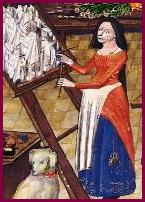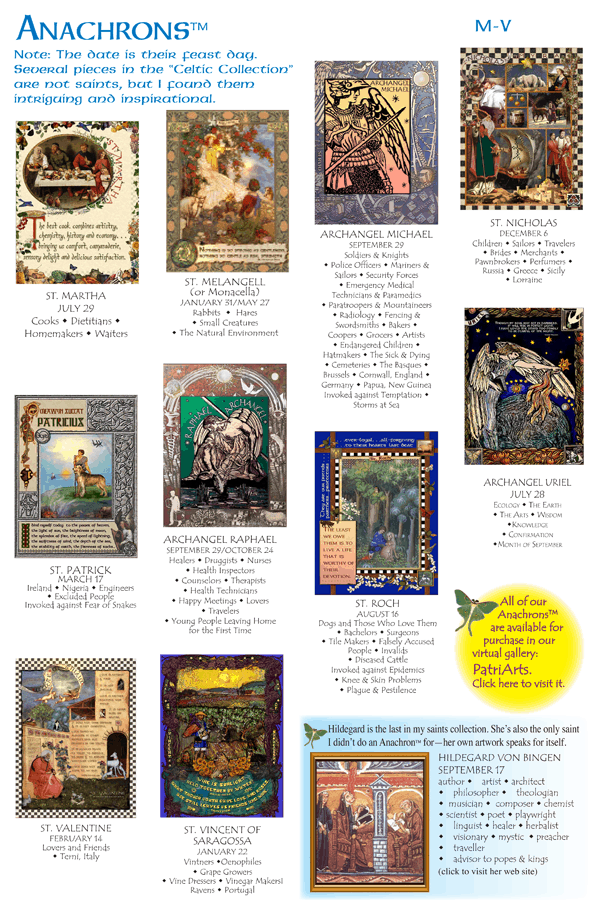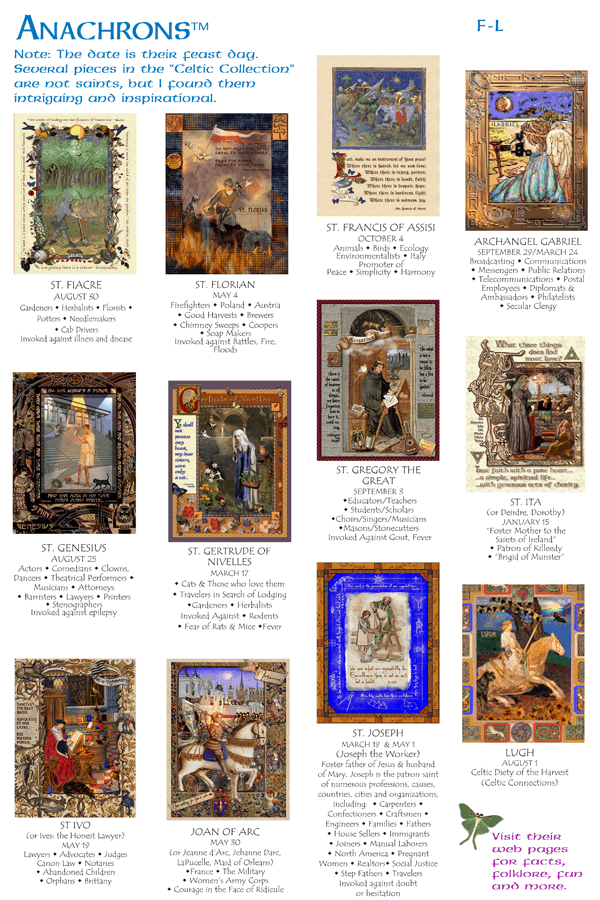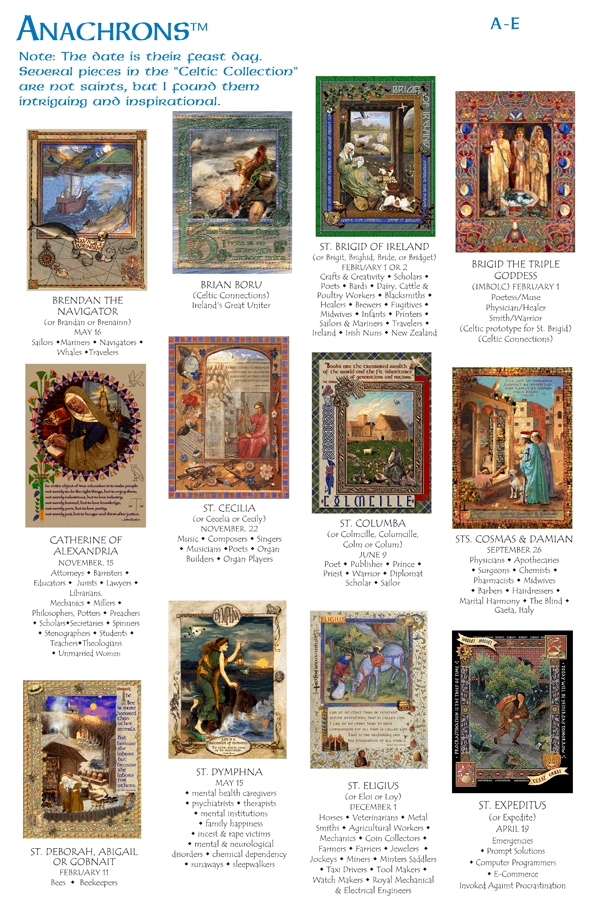Welcome to our renovated site!
St. Expeditus Day is April 19, and we’re doing our best to get it back into shape by then. Thanks for your patience!
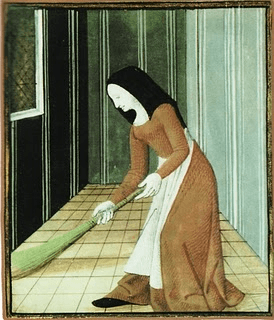
All of our saints have their own pages with historical facts, folklore and more. (Sometimes even a free download of one of our creations).
Just click on the button to go to an alphabetical list, then click on the image.
 We are still in the process of renovating some of these, so apologies in advance for any weird-looking pages or dead links.
We are still in the process of renovating some of these, so apologies in advance for any weird-looking pages or dead links.

Saints Preserved began in 1997 with a sculptural plaque of St. Fiacre.
